How did Daniel Khalife break out of prison?
- Published
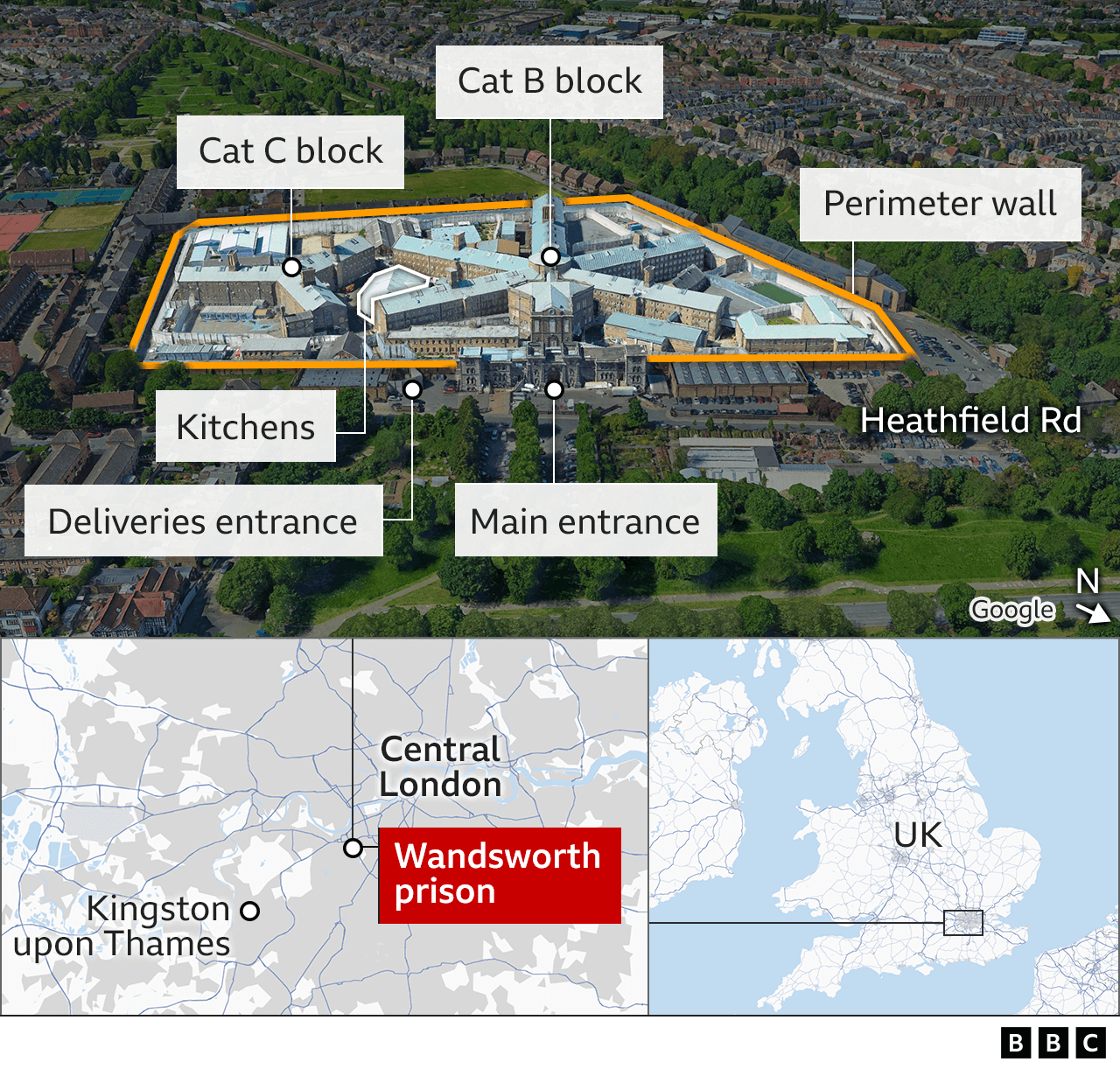
The details of Daniel Khalife's escape raise serious questions about what happened with security at HMP Wandsworth.
The Ministry of Justice is highly unlikely to ever publicly confirm all the details.
If the escape involved exploiting a very specific security loophole or technique, the last thing that governors need is other prisoners getting the same idea.
But what we know about events is clearly very troubling.
Historic jail
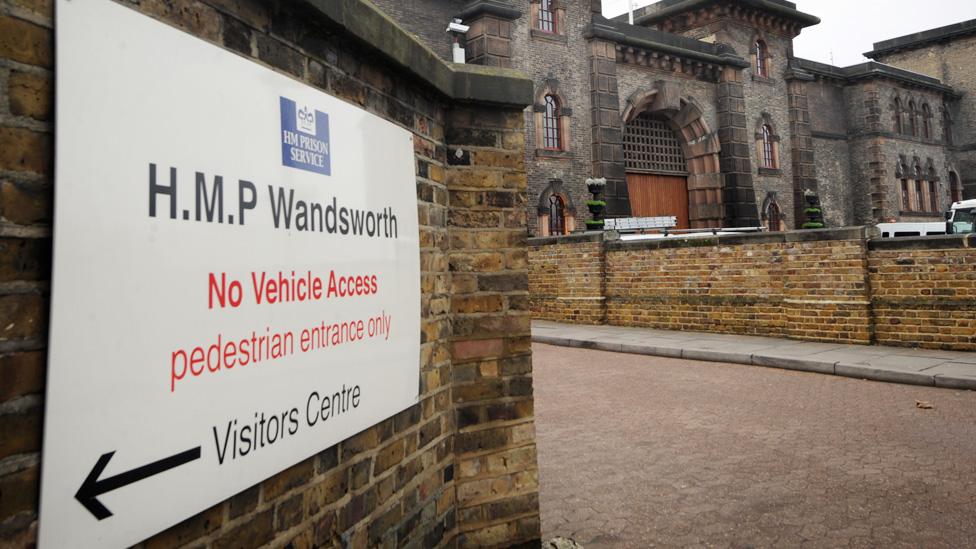
HMP Wandsworth is a Category B prison in south-west London
Wandsworth prison is one of the UK's most famous - and pretty grim - Victorian jails. It's not a pleasant place to spend a day, never mind months or years.
The prison's wings look like spokes off two central hubs, historically called Heathfield and Trinity.
The kitchens are sandwiched between these spokes, on a vehicle access road that is relatively close to the main security perimeter and gatehouse.
That is not an uncommon place to locate them, as they need to receive daily deliveries - and security chiefs need to minimise the movements of vehicles.
We can see from satellite images that the kitchens are also next to industrial rubbish containers - so it's going to be an area with a lot of vehicle traffic over the course of a week - and every movement adds to the security headache for governors.
Delivery vehicles arriving at Wandsworth first pass through a public deliveries gate, then stop in an "airlock" before a second gate.
This means they are in a secure pen between the outside world and the prison.
That is the first location where there can be a thorough security check.
Security teams are trained to search under a vehicle with mirrors and should also check the top of the vehicle and, of course, inside too.
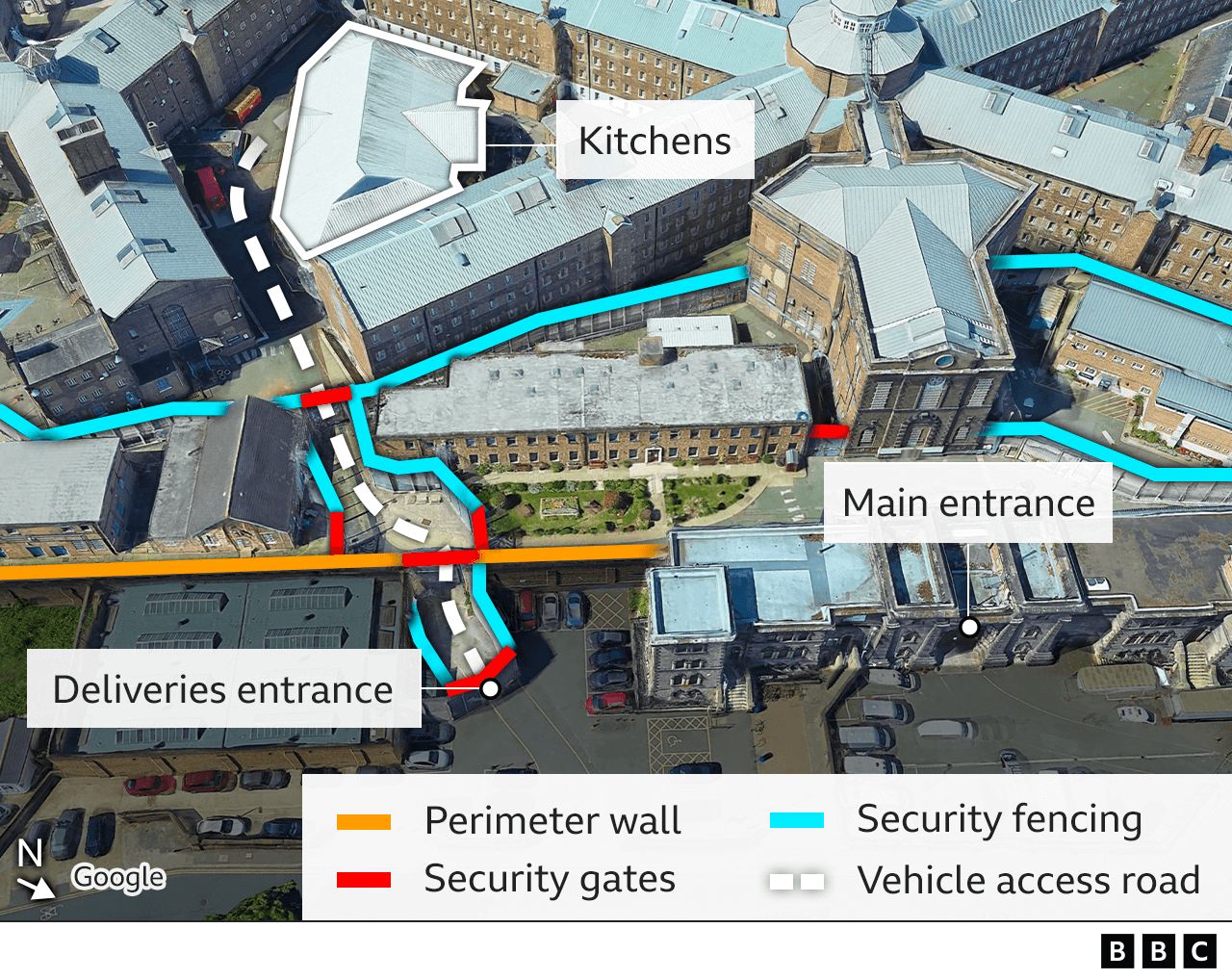
Second layer
Once that check is completed, vehicles move through the second gate, inside the prison walls, marked in orange on our graphic, and then stop again.
They are now in a "sterile zone": a second secure pen between the outer Victorian prison walls and the inner security fencing - marked in green on our diagram.
This zone should be under constant surveillance and nobody should be able to enter it without permission and escort.
Only when the third gate opens, between the sterile zone and the inner fencing, do the vehicles finally reach areas of the jail where they can be potentially accessible by prisoners.
But even at that location the vehicles cannot freely move around - there are further security gates beyond the kitchen block.
That means delivery vans or lorries can only go as far as they are permitted to minimise the risk of smuggling contraband in - or smuggling prisoners out.
All those security steps and checks take place in reverse as vehicles later leave. I've watched this happen more than once in a jail and it all takes time.

The escape vehicle caught on camera
So if we reverse that process, we can say for sure that Mr Khalife was able to evade detection on at least two specific occasions as the vehicle he hid under passed through the two pens and three gates. One thing that police are keeping very tight-lipped about at present is whether they have been able to work out how long Khalife was hiding under the lorry before it departed.
Further failings
But the alleged failings do not stop with the vehicle checks.
Mr Khalife and the lorry left at 7.32am - and he was not declared missing by prison authorities for a further 20 minutes. Another 25 minutes passed before the police were called. They managed to track down the lorry and stop it at 8.37am just over three miles away. By that time, Mr Khalife was long gone - dressed as a chef - and with an hour's head start.
Commander Dominic Murphy, head of counter-terrorism at Scotland Yard, has said that Mr Khalife must have planned his break-out - and given his military training he would be resourceful - with skills that will help him.
Ian Acheson, a former security chief at Wandsworth and national governor, says the escape is a spectacular failure for the prison service given the number of security breaches.

A map showing the route the lorry took before being stopped
Justice Secretary Alex Chalk has confirmed that straps were found underneath the vehicle. This raises several questions:
How did Mr Khalife source something strong enough to hold his weight?
How long did he need to strap himself underneath?
How long was he underneath the vehicle undetected before it left?
Was there some kind of specific design feature of the vehicles that Mr Khalife exploited to hide himself away? Does that now pose a risk of further escapes by other prisoners?
Those questions will trigger an investigation into whether he had help - potentially from the inside.
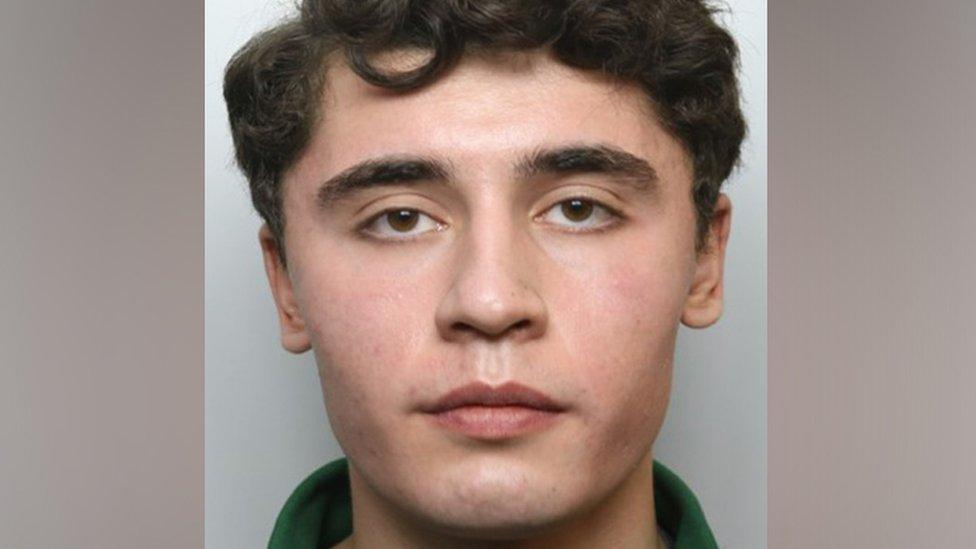
Daniel Khalife worked in the kitchens, a high-risk escape area
'Plum' kitchen job
Mr Khalife was also in a rather unusual position of being a remand prisoner awaiting trial for very serious offences - yet also, as former prison governor John Podmore told BBC News, holding a "plum job".
Prison officers choose very carefully who gets to work in kitchens because they're full of knives and other dangerous equipment.
Because of the deliveries, they are also an obvious potential escape route.
Typically, inmates selected to work in kitchens have a record of being reliable and trustworthy.
So why was a man facing terrorism charges working in the kitchens? That's just one of the questions that Mr Chalk wants answering.
He has told MPs he wanted to know who was in charge at both the kitchens and the gatehouse - and what security protocols they were following.
The justice secretary asked for a preliminary report by the end of the week - and has promised there will be a further independent inquiry.
Related topics
- Published7 September 2023
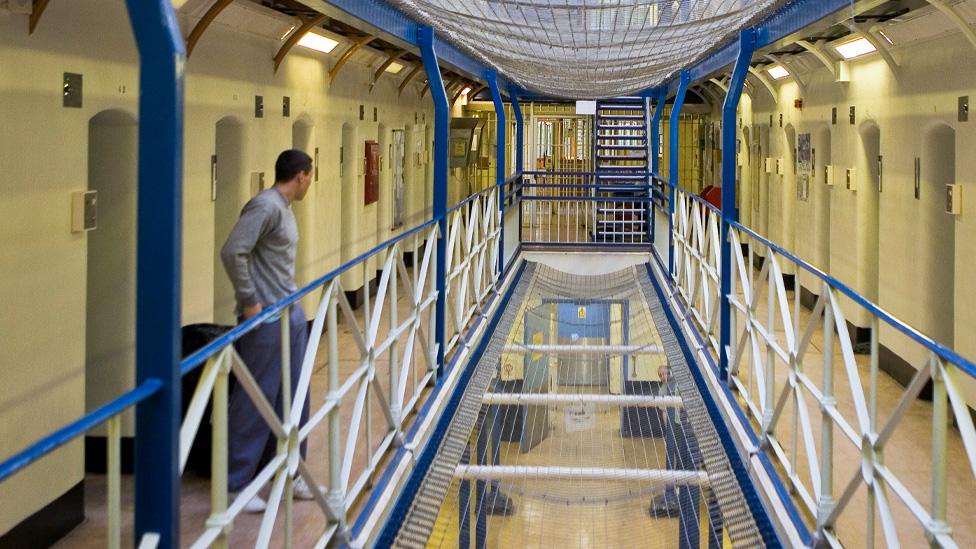
- Published7 September 2023

- Published8 September 2023

